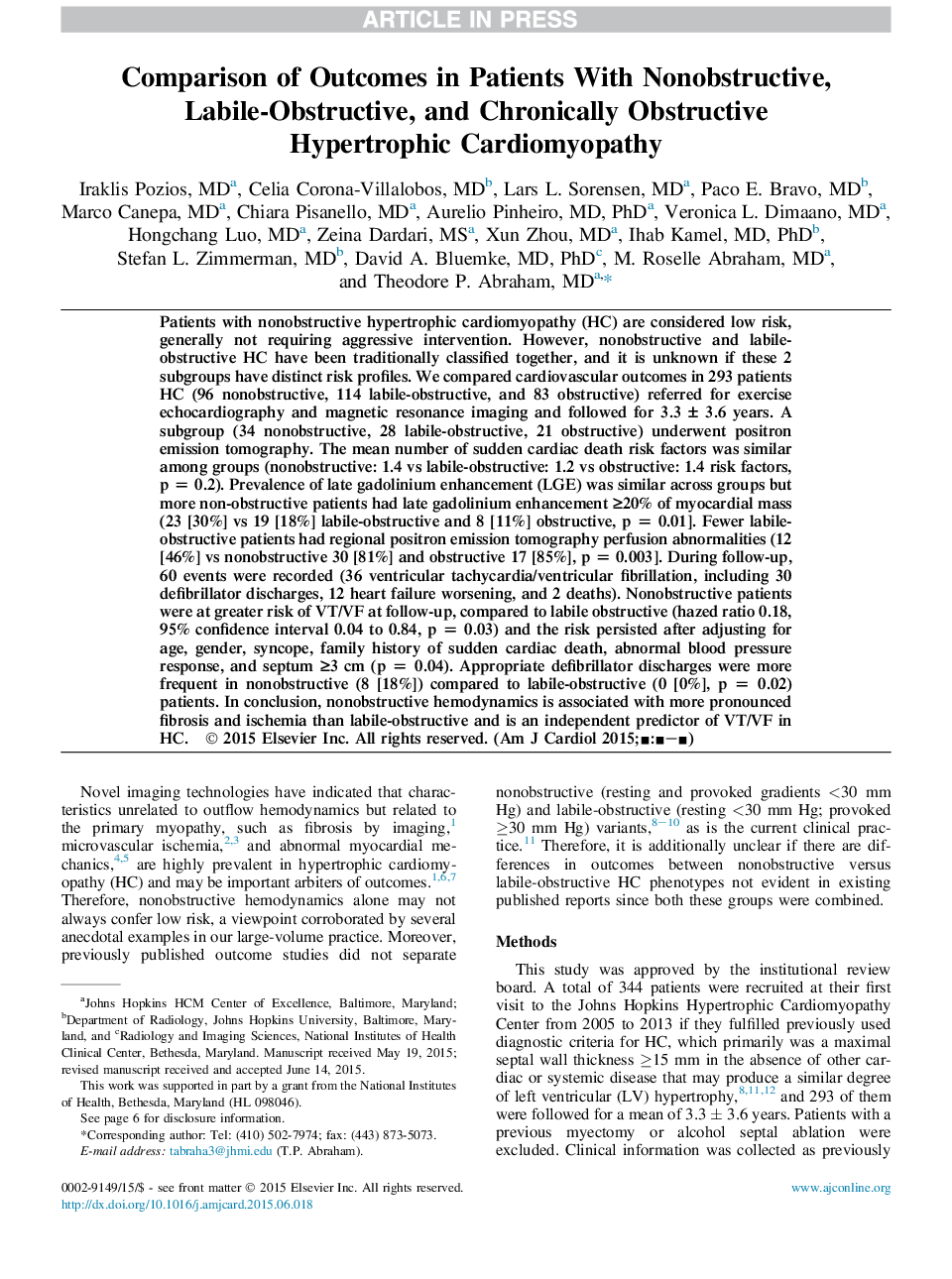| Article ID | Journal | Published Year | Pages | File Type |
|---|---|---|---|---|
| 5929797 | The American Journal of Cardiology | 2015 | 7 Pages |
Abstract
Patients with nonobstructive hypertrophic cardiomyopathy (HC) are considered low risk, generally not requiring aggressive intervention. However, nonobstructive and labile-obstructive HC have been traditionally classified together, and it is unknown if these 2 subgroups have distinct risk profiles. We compared cardiovascular outcomes in 293 patients HC (96 nonobstructive, 114 labile-obstructive, and 83 obstructive) referred for exercise echocardiography and magnetic resonance imaging and followed for 3.3 ± 3.6 years. A subgroup (34 nonobstructive, 28 labile-obstructive, 21 obstructive) underwent positron emission tomography. The mean number of sudden cardiac death risk factors was similar among groups (nonobstructive: 1.4 vs labile-obstructive: 1.2 vs obstructive: 1.4 risk factors, p = 0.2). Prevalence of late gadolinium enhancement (LGE) was similar across groups but more non-obstructive patients had late gadolinium enhancement â¥20% of myocardial mass (23 [30%] vs 19 [18%] labile-obstructive and 8 [11%] obstructive, p = 0.01]. Fewer labile-obstructive patients had regional positron emission tomography perfusion abnormalities (12 [46%] vs nonobstructive 30 [81%] and obstructive 17 [85%], p = 0.003]. During follow-up, 60 events were recorded (36 ventricular tachycardia/ventricular fibrillation, including 30 defibrillator discharges, 12 heart failure worsening, and 2 deaths). Nonobstructive patients were at greater risk of VT/VF at follow-up, compared to labile obstructive (hazed ratio 0.18, 95% confidence interval 0.04 to 0.84, p = 0.03) and the risk persisted after adjusting for age, gender, syncope, family history of sudden cardiac death, abnormal blood pressure response, and septum â¥3 cm (p = 0.04). Appropriate defibrillator discharges were more frequent in nonobstructive (8 [18%]) compared to labile-obstructive (0 [0%], p = 0.02) patients. In conclusion, nonobstructive hemodynamics is associated with more pronounced fibrosis and ischemia than labile-obstructive and is an independent predictor of VT/VF in HC.
Related Topics
Health Sciences
Medicine and Dentistry
Cardiology and Cardiovascular Medicine
Authors
Iraklis MD, Celia MD, Lars L. MD, Paco E. MD, Marco MD, Chiara MD, Aurelio MD, PhD, Veronica L. MD, Hongchang MD, Zeina MS, Xun MD, Ihab MD, PhD, Stefan L. MD, David A. MD, PhD, M. Roselle MD, Theodore P. MD,
